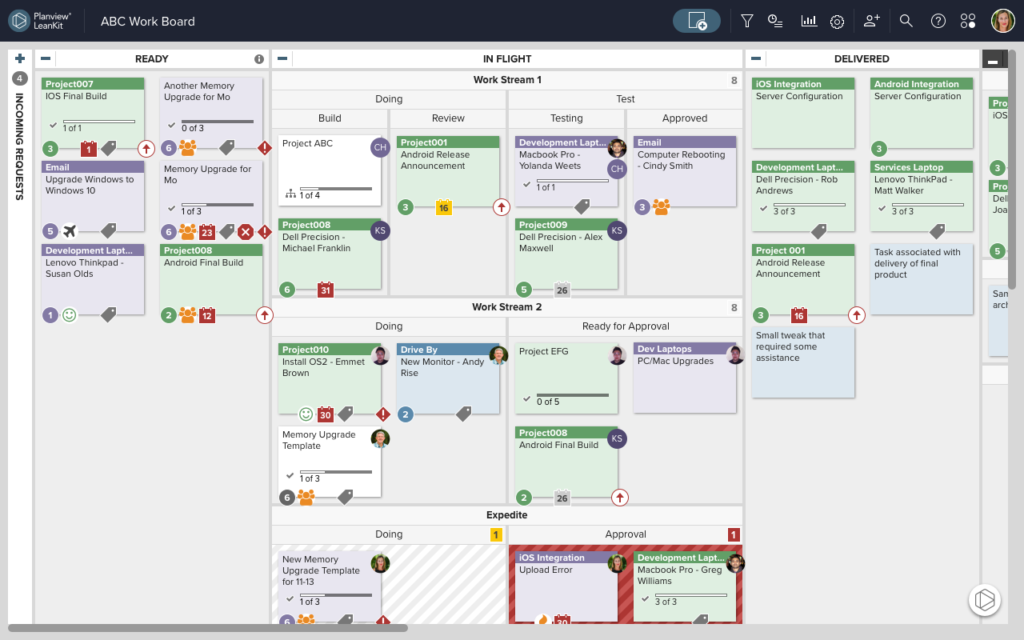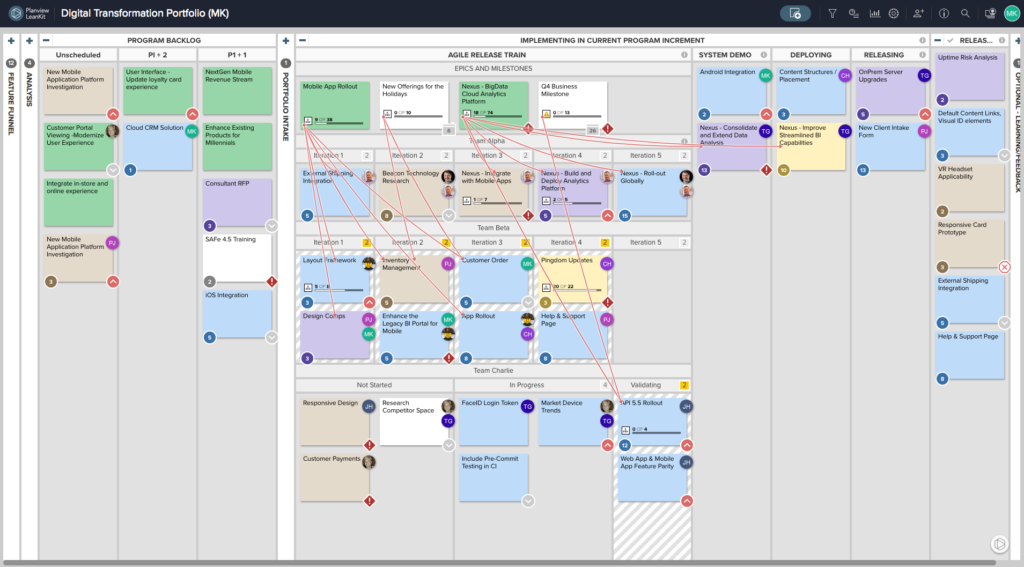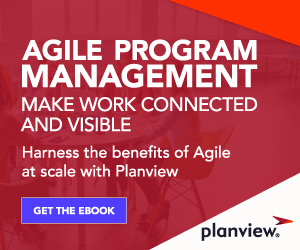
Virtually all major corporations today use Agile in some capacity to accelerate value delivery. With more organizations needing to find solutions that enable faster value returns, Agile Program Management has quickly become a central practice in many businesses. In the recent webinar Aligning Around Customer Value: From Outputs to Outcomes Are you really Agile or are you just busy? Kenny Grant, Enterprise Coach and Director of Agile Consulting at UST-Global and Jon Terry, Chief Evangelist Lean-Agile Strategy at Planview tackle the topic of delivering customer value through Agile Program Management and enterprise Kanban. This blog highlights some main points from the webinar focusing on customer value delivery, enterprise Kanban capabilities for an effective Agile program, and tips to improve work in progress with your Agile teams and teams of teams. Let’s jump in.
Focus on Customer Needs
As organizations scale Agile, many must learn to apply a core principle of the Agile Manifesto: The early and often flow of customer value. Hint:This is fundamentally how value streams form within Agile organizations.
A value stream is a group of Agile teams and teams of teams aligned to deliver a product or service (value) to an end consumer. Those consumers can be internal or external depending on the type of value stream. The value is defined from the customer’s perspective; more specifically, the benefits the customer will gain from using a product or service (ex. improved business process or software enhancement).
Agile delivery without alignment to customer value often leads to “busyness over effectiveness”, creating an illusion of value delivery. By managing customer value and having visibility into high-value work, any unwanted and wasteful activities can be reduced significantly (with the help of enterprise Kanban). Additionally, a customer-centric approach to work prioritization helps teams focus on the most important work to be completed at a given time. Enterprise Kanban tools support Agile Program Management efforts in that they provide teams and Agile Release Trains (ARTs) a tool to manage priorities, the backlog, conduct ceremonies, and visualize work in progress – from start to finish. Additionally, it is also critical to visualize work in progress not only at the team level but the program level.

Increase Visibility with Program Level Views
With teams and ARTs working to progress toward customer value – leaders must visualize and steer teams in the appropriate direction. A program board can connect multiple team boards so executives and leadership can visualize the most critical investments or epics assigned to a value stream. (See the cryptocurrency example by registering for the webinar.)
This is critical part of Agile Program Management because it gives leaders and stakeholders the opportunity to visually understand the work started vs not started for any given epic. It also allows leadership to see blockers, address any potential challenges, and dive deeper into team boards and associated child cards for a better representation of work in progress and missed deadlines, so the team can make tradeoff decisions to ensure critical customer value is achieved.
As organizations take a more customer centric approach, it is important to incorporate continuous alignment and elevate team level boards to a program level view to reduce roadblocks, stay in communication, and mitigate risks.

5 Tips for Managing Customer Value
To manage the delivery of customer value more effectively, Agile teams should consider the following tips and techniques from Agile Coach, Kenny Grant to deliver value and coordinate work faster:
- Sequencing/prioritizing value items. This can be done at the program level and the team level during different Agile ceremonies, including the daily standup and or steering. The right tool will enable this with a visual representation of work priorities led by the Product Owner.
- Limit work in progress (WIP) – start stopping and start finishing. Use in app reporting to understand WIP and determine any challenges in value delivery and address them before they become issues.
- Swarm around value items and seek ways to reduce value item cycle times. Use the power of your team to ensure customer MVPs are delivered. Leverage program boards and steering meetings if issues need to be escalated.
- Align capacity around customer value. Visualize the priority MVP(s) and ensure your team members are focused on highest value work.
- Cascade focus on teams delivering work during Scrums to achieve continuous alignment. Use in app reporting to quickly see blockers and get the value flowing again
To learn more about the topic, I invite you to watch the latest webinar Aligning Around Customer Value: From Outputs to Outcomes. Are you really Agile or are you just busy? For additional insight into how to identify value streams, download the eBook to get started.

![Agile Program Management: How to Increase Agile Scaling Success [Video]](https://blog.planview.com/wp-content/uploads/2020/09/Apm-video.gif)


